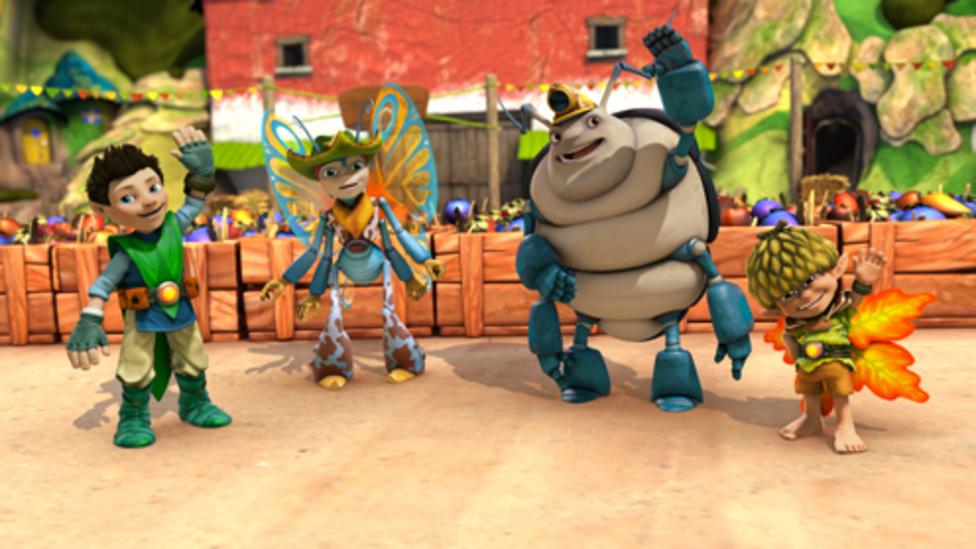Dyspraxia: how Tree Fu Tom can help
Help your child develop foundation motor skills with Tree Fu Tom's magic spell sequences developed to support children with movement disorders

Developing movement skills: helping children with dyspraxia
Between the ages of 2 and 7, children will develop most of the movement skills that they’ll need for complicated physical activities later in life, and it’s important that they get plenty of opportunities to practise these newly-acquired abilities.
Skills like balancing, moving your arms and legs in coordination and using both sides of your body together are vital building blocks that enable children to master everyday activities like getting dressed, using cutlery or using a pencil.
Some children, including those with movement disorders such as dyspraxia, face additional challenges in learning these skills.
What is dyspraxia?
Dyspraxia is a developmental coordination disorder that causes difficulty in acquiring foundation movement skills that seem to come naturally to other children.
It’s surprisingly common, affecting around 10% of children to some degree – that’s up to 3 children in every UK classroom.
Dyspraxia is the result of an immaturity in the development of the nervous system. This means that nerve signals aren’t sent smoothly from the brain to the muscles, so movements appear awkward and take a lot of effort.
We don’t really understand what causes dyspraxia, but we do know that given the right opportunities and enough practice, children are able to develop the movement skills they need for everyday life.
How Tree Fu Tom helps children develop essential skills
All the Tree Fu magic spell movements in Tree Fu Tom have been developed by movement specialists to help children practise these crucial skills, and to support those with movement disorders like dyspraxia.
Children with coordination disorders often need more opportunities to get to grips with these movements than their friends, and a huge benefit of Tree Fu Tom is that children are keen to help Tom and join in with the spells, so they’ll be practising their movement skills without even realising it!
You can also use the Tree Fu Tom online games to help children build the skills that will help them with day-to-day classroom activities.
For example, matching shapes in the games will improve visual perception and shape recognition, which prepares children to decipher letters when they’re learning to read.
The games also incorporate left-right tracking activities and build up children’s ability to scan from left to right across a page, which they’ll need for reading later on.
��
Tree Fu Tom Spells video
The 12 key movement skills
There are twelve crucial movement skills that help children to perform everyday activities, and underpin the fine motor skills they’ll need for classroom learning later on:
Balance
This is the ability to hold a position without falling over, either while still (static balance), or while moving around (dynamic balance).
Trunk rotation
This is the ability to hold the lower body still whilst turning the upper body to the side. It’s important for activities like throwing a ball or crawling.
Shoulder stability
This is the ability of the muscles to hold the shoulder joint steady. It allows the arms to be held in different positions so that your child can use their hands for things like writing or using cutlery.
Pelvic stability
This is the ability of the muscles to hold the pelvis steady. It’s important for sitting, standing, and moving around, and affects control of the hands for things like reaching out.
Trunk / arm separation
This is the ability to move the arm in a controlled and accurate manner away from the body. It is affected by pelvic and trunk stability, and is important for activities like pouring a drink or throwing a ball.
Trunk / leg separation
This is the ability to move the legs in a controlled and accurate manner away from the body. It is affected by pelvic and trunk stability, and is important for things like kicking a ball or pedalling a bike.
Fluency of movements
This is the ability to move the body in a smooth and controlled manner. It is important for activities like drawing, running or spreading butter on toast.
Proprioception
This is the ability to sense where your body is in space and how it is moving without looking. It is generated by feedback from the muscles and joints and helps with sitting squarely on a chair, and moving around without bumping into people or objects.
It also helps us to know how much force we’re using, so that we can carefully pick up objects or pour a drink.
ATNR
The asymmetrical tonic neck reflex (ANTR) is sometimes known as the ‘fencing response’. This describes the movement of a baby’s arms and legs when their face turns to one side. It’s useful in babies as it helps with the development of hand-eye coordination.
If it remains in older children, though, it can affect their ability to bring both hands together or keep hold of an object when looking around a room. It can also affect their postural stability, for example, sitting at a school desk.
Spatial concepts
This refers to the child’s awareness of how their body moves in relation to their position in space, and where objects are in relation to their body.
It is important for understanding diagrams and directions (for example, up, down, into and away from the body), and for activities such as pulling a jumper over the head and scooping food onto a spoon.
Midline crossing
This is the ability to move one hand or foot across the middle of the body to carry out an activity. It’s important for developing hand/foot dominance and for activities like pulling on a coat or writing across a page.
Fine motor skills
This is the ability to use the hands, fingers and thumbs in a precise and controlled manner. This is important for holding and manipulating objects such as pencils and cutlery.
More from the ����ý:
Around the web: